~A sci-fintasy setting in the works! Created by a Goblin with a Problem~
Don't wanna be here? Send us removal request.
Text
You ever get bored and make a meme about your setting?

On a totally unrelated note, here's a meme about my setting (context below)
In my setting, a multitude of anomalous periodic elements exist. Some of these are rather potent in their affects and effects on known reality, which is sometimes taken advantage of by the creatively twisted; enter the Horon Empire, circa Year 5,000 of the Fourth Age. With an expansionist policy that would make the Roman Empire, the United States, and the Russian Federation Tsardom blush, their secret in maintaining their size lies within how they prevent other intergalactic ruling entities from taking their systems.
A simple design, really:
- Strap a missile launch system in a satellite, making sure the payload of the lone missile is stocked to the brim with megaloheterine elements over one tonne in total mass.
- Launch the satellite into orbit around the system's star(s), ensuring that it remains guarded with the latest defense technology, plenty of armed personnel, and a convoy of several armored ships.
- Threaten to launch the missile at the system's star(s) if any foreign military ships capable of starting a war attempts to engage in combat.
- If the previous step fails, and combat leads to potential loss of the system, launch the missile at the star (if more than one, the one with the most mass and/or is closest) and let the resulting giganova tear a hole in the local region's reality.
After losing several fleets in such a manner, the policy of other intergalactic states is to prevent expansion of the Horon's borders by taking out expansion parties before they can establish the satellite.
4 notes
·
View notes
Text
One of my favorite parts about worldbuilding is figuring out the evolutionary pathway my various organisms will take throughout the hundreds of millions years of Karyic prehistory

A quick sneak peek into the design process for the next episode of Gobbi's Lessons, featuring the evolutionary timeline of the clade Tridactylocheiridae; this lineage of animals descends from a species analogous to Earth's Dimorphodon macronyx.
#projectkarya#scifi#fantasy#sci-fintasy#creativity#artwork#art#project karya#sketch#doodle#drawing#brainstorm#ideas
6 notes
·
View notes
Text

Little template I made for future genera size charts! What'll appear, I wonder?
5 notes
·
View notes
Text
Sneak peek into the upcoming Gobbi's Lesson with some scenery images I've made! This one will be on the Hemizoic era, Karya's analogue in the geologic time scale to Earth's Mesozoic era. We'll begin seeing more and more genera survive extinction long enough to have even more descendants, resulting in even more unique extant species on Karya that aren't present on modern Earth.
Due to the sheer scope of how many unique lineages have survived from this geological era, we're gonna restrict images on clade slides to the genera outlines mentioned in my previous post.



((alt text below))
Left: a scene depicting a moment during Karya's Iyonian period in its geological history. The planet's two suns, Damathi (left) and Kezjar (right), start lowering in the afternoon sky, beginning to cast shadows on the landscape. The area to be in the middle of a drought, considering the reduced water level of what otherwise would be a flooded swamp. In the background stands a silhouetted, unknown species of early paramammalian; a species of "scale fern" trees partially obscures its form. In the foreground, two more such trees are present, one of which has long since died and broken apart, leaving a decaying log and stump. Center: a scene depicting a moment during Karya's Etronian period in its geological history. A lone Ceratosaurus accidentally disturbs a phytosuchid - a relative of modern crocodilians - as it's grazing beneath an extinct species of nabo tree. Despite their carnivorous relatives, phytosuchids are almost completely herbivorous, occasionally supplementing their diets with shellfish and bones for extra calcium. They would come to fully replace thyreophorans as the clade of "armored archosaurs"; modern descendants still flourish within various tropical and semi-arid regions of Karya. Right: a scene depicting a moment during Karya's Atanarian period in its geological history. During this time, the northern supercontinent Omuros was just a collective of still rather cold, smaller islands; on one of these islands, in the middle of the night, a polar therrynchid walks across the snow-packed ice fields in the midst of a blizzard. These odd relatives of mammals and paramammals descend from a dicynodont relative similar to the genus Lisowicia. All three represent unique, diverging lineages of therapsids that managed to survive the Atanarian-Frathanoan extinction event - the source of which is closer than one may think.
#projectkarya#scifi#creativity#fantasy#sci-fintasy#fiction#oc#artwork#art#project karya#oc art#oc artwork#ms paint#doodle#digital art#paleontology#paleoart#speculative biology#speculative evolution#spec bio#spec evo#fantasy biology#folklore#mythology and folklore#i just think they're neat#speculative worldbuilding#worldbuilding#writing#short writing
14 notes
·
View notes
Text
Alrighty, no more map making! We got that out of our system ((for now)), and can dedicate our energy to focusing solely on Episode 5 of Gobbi's Lessons. While I am, I'd like to have a little audience poll to determine some of what y'all want to see in both Episode 5 and in future episodes concerning Karyic organisms:
The last Gobbi's Lesson featured phylogenetic charts to show how each species of "present-day", uniquely Karyic lineages. While these are good for representing how each modern genus is related to each other in the same lineage, it doesn't give quite a good idea into what each genus looks like.

However, silhouette size charts such as this are commonly used in places such as Wikipedia articles, to both give a sense of scale in comparison to the average human as well as to illustrate what the outline of the living organism may have looked like.
#projectkarya#scifi#fantasy#sci-fintasy#fiction#project karya#poll#poll time#my polls#polls#tumblr polls#random polls#biology#speculative worldbuilding#speculative zoology#speculative biology#spec evo#spec bio#speculative fiction#science fiction#what if#ideas#i just think they're neat#decisions decisions#brainstorm
3 notes
·
View notes
Text


A topographical map of the planet Karya; both with and without an accompanying scale. Made in MS Paint
#projectkarya#scifi#creativity#sci-fintasy#fantasy#fiction#oc#artwork#art#project karya#map#mapmaking#worldbuilding#setting#height#i just think they're neat#finally after all these months i have finally finished it#work#determination#oc art#ms paint#my art#my artwork
12 notes
·
View notes
Text
Also, first look into my draft for a world map of Elsiro, the closest planet to Karya's twin suns. AKA, the love child between the planets Venus and Mars; complete with oceans, clouds, and precipitation made of nitric acid, as well as extremely hardy flora and fauna that've been genetically engineered to withstand this desolate landscape:
Welcome to "Hell"

#projectkarya#scifi#creativity#fantasy#sci-fintasy#fiction#oc#artwork#art#project karya#map#planet#hell#afterlife#demons
5 notes
·
View notes
Text
Why, oh why must there be so many floating islands for a poor ol' Fragilihomo sapiens like myself to document?



((because they're cool, that's why))
#floating island#projectkarya#project karya#scifi#sci fi#science fiction#planet#planets#map#maps#mapmaking#globe#creativity#art#artwork#oc#oc art
7 notes
·
View notes
Text
Update on Karya's topography map!






As I mentioned in the last post, the inner-most ring of mountain ranges on the northern continent, Omuros, has been finished, and now I complete the continent by filling out the more peripheral ranges closer to the coasts.
While I work on the map's finishing touches, however, I have a question to ask you all:
You're a lone wander that's been dumped in the middle of Karya. After long months of journeying, encountering wondrous creatures and sights that defy imagination, you come across a scene: naturally floating islands. These islands all come in a variety of sizes, with the smallest seeming to be no more than a few meters across while the largest could easily be several kilometers in radius. They all appear to not be tethered to any surface, yet neither do they seem to drift away from their locations with the wind or the shifting of the planet's surface below. On the weathered rocky protrusions underneath these islands, you notice several patches on the stone surface appear to giving off specks of light; at night, these patches glow with a thrumming intensity, usually ranging in the blue to yellow-green spectrum. On the surface of these islands, thriving ecosystems bloom, with diverse creatures that have been isolated for an untold number of generations.
#projectkarya#scifi#creativity#fantasy#sci-fintasy#oc#artwork#art#project karya#map#mapmaking#worldbuilding#speculative worldbuilding#i just think they're neat#tumblr polls#random polls#poll time#my polls#polls#decisions decisions#brainstorm#ideas#inspiration#fiction#ttrpg#rpg#oc art#ask me anything#open to all
17 notes
·
View notes
Text
Here's a preliminary design of an ancestor for the new unique clade of complex, multicellular Karyic life!
Introducing: Procosmimaphytae, of the the clade Cosmimaphytae

These organisms first appeared on Karya approximately 46 million years ago, during the middle of the Frathanoan period (analagous to the Paleogene period on Earth). Stemming from colonial pinnate diatoms that found a new niche in the rather recently-formed Great Polar Basin, Procosmimaphyta is rather simplistic in morphology:
A main mass, comprised of an outer covering of living cells maybe five to ten layers deep, and an inner core of dead cells and reinforced extracellular matrix, slowly grows over Procosmimaphyta's lifespan, which can last anywhere between 50 and 250 years.
A "cap" of tissue containing reproductive cells that can have a different appearance depending on the sex of the individual.
Like their diatom cousins, Procosmimaphyta, as well as extant species in Cosmimaphytae are capable of biomineralization. However, unlike diatoms, only the "fruit" of cosmimaphytids employ biogenic silica (opal), while the rest of the organism uses aragonite, occasionally appearing as nacre. This, combined with modern cosmimaphytids' tendency to grow in branching shapes, led to the scientific name which means "jewel plants", as any light hitting them causes a chromatic, shimmering coloration; each species also has varying degrees of translucence.
Procosmimaphyta and its descendants require animals in at least part of their life cycles as sources of direct nutrients. This mostly takes place during cosmimaphytid reproduction, in which they produce zygotes capable of burrowing into exposed flesh and slowly multiplying/developing within hosts.
Over the tens of millions of years since Procosmimaphyta first appeared, its descendants would come to populate the Great Omuric Basin as its main form of macrophytes. Some subclades would even come to conquer the vast array of cave systems in the surrounding mountains that allow for outflow of the basin.
Hear-ye, hear-ye:

Karya is gonna have another group of complex multicellular organisms other than the vivibullids to have uniquely evolved on Karya.
Why? Because I truly wanna encapsulate the sci-fintasy feeling of my setting by asking the question, "what if a crystalline, subterranean 'plant' was capable of reproducing by having fruiting bulbs that build up fluid pressure within to the point where any external disturbance "detonates" it, sending out a multitude of zygote-filled shards that embed themselves into as much organic mass as possible".
Just imagine a troglodytic creature carrying these shards in its side for days or weeks on end while it traveled its cave system, before eventually collapsing from exhaustion/organ failure. Then, from its body, sprouts a new colony of these organisms, which use the organic matter from the body to rapidly build up while leeching materials from the surrounding cave walls to build up their cell walls.
#scifi#fantasy#sci-fintasy#fiction#oc#artwork#art#creativity#projectkarya#project karya#speculative biology#speculative zoology#speculative fiction#speculative evolution#spec evo#spec bio#diatoms#microbiology#setting#worldbuilding#fantasy worldbuilding#brainstorm#drawing board#design#i just think they're neat#what if#reef#cave
6 notes
·
View notes
Text
Hear-ye, hear-ye:

Karya is gonna have another group of complex multicellular organisms other than the vivibullids to have uniquely evolved on Karya.
Why? Because I truly wanna encapsulate the sci-fintasy feeling of my setting by asking the question, "what if a crystalline, subterranean 'plant' was capable of reproducing by having fruiting bulbs that build up fluid pressure within to the point where any external disturbance "detonates" it, sending out a multitude of zygote-filled shards that embed themselves into as much organic mass as possible".
Just imagine a troglodytic creature carrying these shards in its side for days or weeks on end while it traveled its cave system, before eventually collapsing from exhaustion/organ failure. Then, from its body, sprouts a new colony of these organisms, which use the organic matter from the body to rapidly build up while leeching materials from the surrounding cave walls to build up their cell walls.
#projectkarya#scifi#fantasy#sci-fintasy#creativity#fiction#project karya#spec evo#spec bio#speculative evolution#speculative biology#speculative fiction#speculative zoology#speculative worldbuilding#worldbuilding#i just think they're neat#microbiology#microbial#life#life is weird#neat#setting#brainstorm#ideas#could be fun#cave#caves#glass#let him cook
6 notes
·
View notes
Text
Psst, lemme fill you in on a little secret....
Karya's hobbits/halflings descend from a creature similar to the European badger:
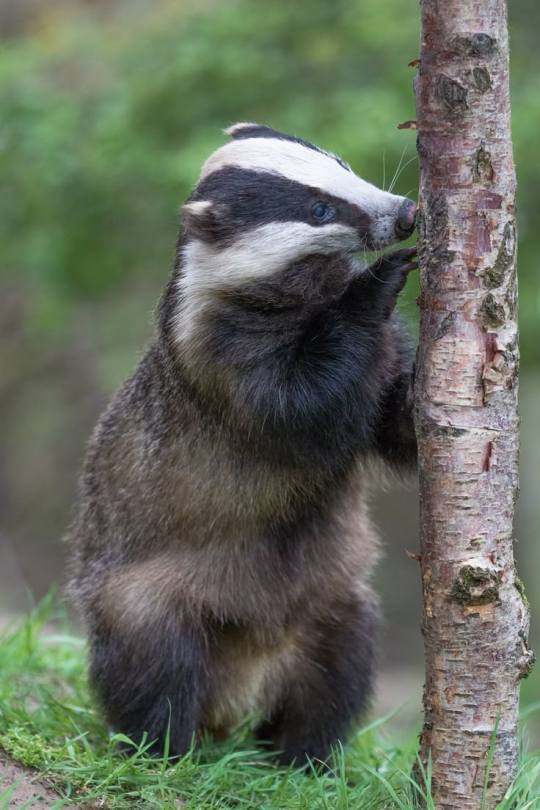
Smol little goobers? Check
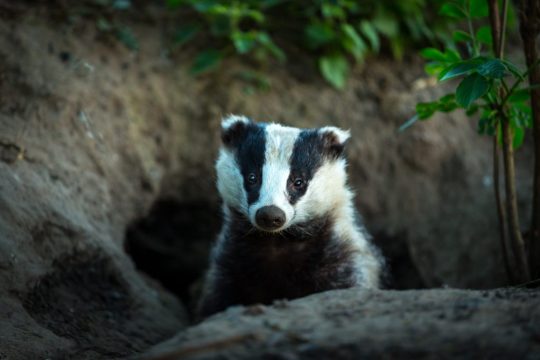
Lives in complex tunnel systems? Sounds like a hobbit hole to me.

Sociable little guys that even allow other species to reside in their burrows? A proper hobbit, of course, knows to properly host their guests, no matter where they are from.

Possessing a varied diet, including things such as bugs, carrion, fruit, cereal grains, and more? They're obviously great connoisseurs that would appreciate multiple kinds of meals in a day.

Already represented in some folklore in some form of anthropomorphic way? All the better, and it fits in the spirit of Project KARYA!

Absolutely charismatic, dapper sweeties? They deserve to develop sophonce and formulate their own, darling cultures.
#hobbits#folklore#halfling#sci fi and fantasy#scifi#fantasy#projectkarya#creativity#sci-fintasy#fiction#project karya#speculative biology#spec bio#spec evo#speculative evolution#badger#animals#mammal#cute#aww#adorable#thoughts#i just think they're neat#worldbuilding#setting
18 notes
·
View notes
Text
First off, I appreciate how much of you liked the original post I made in regards gnomes on Karya (linked above for those who haven't seen it yet!). I always like letting people in on the creative process for this worldbuilding project, and I hope it gets people interested in future works tied to Project KARYA!
Secondly, while looking into skeletal diagrams, I discovered a completely different species of primates that evolved convergent traits to tarsiers:

Galagos/Bush Babies
And, of course, being an indecisive bastard, I figured I'd let "my fans" help decide for me! So let's put it to a vote....


((reference photos for a galagos, left, and for a tarsier, right))


((reference for a galagos skeleton, left, and for a tarsier skeleton, right))
#projectkarya#creativity#sci-fintasy#fantasy#scifi#fiction#project karya#tumblr polls#random polls#poll time#my polls#polls#decisions decisions#you decide#speculative zoology#speculative biology#speculative fiction#spec evo#spec bio#gnomes#gnome post#gnome#folklore#mythical creatures#fictional creature#realistic fiction#i just think they're neat#primate#monkeys#worldbuilding
5 notes
·
View notes
Text

Welcome, new traveler of the Chaos! I know you may have lots of questions. You may not know where you are, you may not know where to go. Allow me, then, to introduce myself; I am Gobb'ola Mawwick, and you've stumbled upon my little study away from home. Where is my home, you ask? Why Karya, of course!
Stay a while, and feel free to peruse my grand library! The answers to your questions can easily be found, just look through the various sections to learn about my homeworld. If you don't see something that is listed, don't hesitate to Ask the Librarian (me!).
Enjoy your stay, traveler, and safe journeys on your future travels through the Chaos!
The Library's Catalogue:
Gobbi's Lessons: Learning the Basics of the Karyic Universe
Episode 1: Origins of the Karyic Universe
Episode 2: Anomalous Particles, Elements, & Effects
Episode 3: The Kezjo-Damothic Star System
Episode 4: Karya's Geological Timespan & Unique Lineages - The Homozoic Era
Episode 5: Karya's Geological Timespan & Unique Lineages - The Hemizoic Era [WIP, coming soon!]
Episode 6: Karya's Geological Timespan & Unique Lineages - The Allozoic Era [TBD]
Episode 7: Karya's Geological Timespan & Unique Lineages - Flora Edition [TBD]
Charts & Diagrams
Celestial Chart of Karya's Night Sky
Representation of the Kezjo-Damothic Star System
Measuring Time On Karya
Maps of Karya, Post-Restructuring: Topography
Maps of Karya, Post-Restructuring: Climate [TBD]
Maps of Karya, Post-Restructuring: Physical [WIP, coming soon!]
Maps of Karya, Post-Restructuring: Ocean Circulation [TBD]
Diagram of Elementary Particles and Periodic Elements of the Karyic Universe
Short Works on Flora, Fauna, & Other Karyic Life
Mycophagus: An August Arachnid
Poetry & Literature of Karya
Darkness Hatching: How Night & Day Were Born
#projectkarya#scifi#creativity#fantasy#sci-fintasy#artwork#fiction#art#creative writing#table of contents#list#reference#come here#behold my stuff
5 notes
·
View notes
Text
Sneak peak into Gobbi's Lessons, Episode 5: The Hemizoic Era...
Do you think more species from the Mesozoic Hemizoic era should survive to the modern day on Karya? Leave a comment!!
((context for those who are curious))
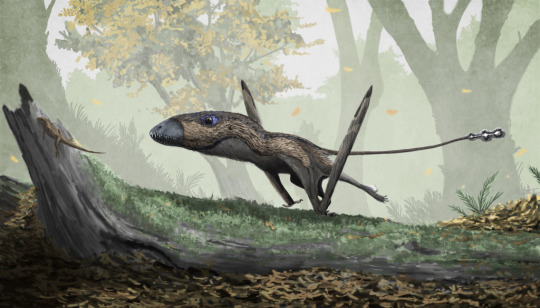

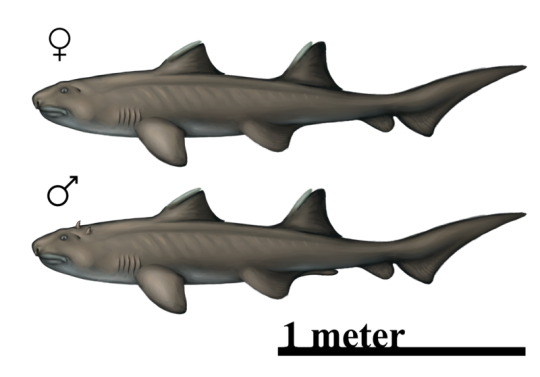
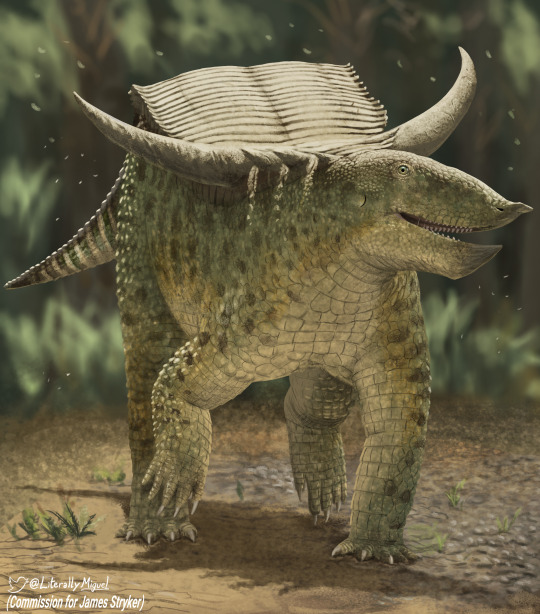







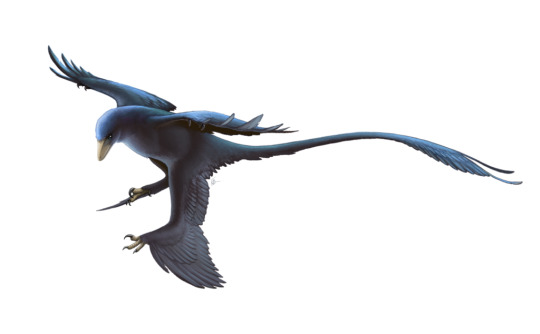

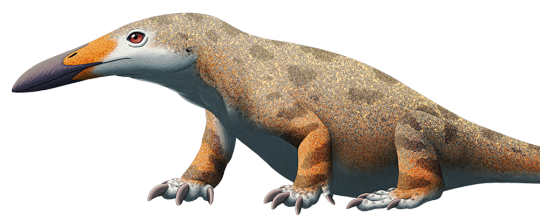
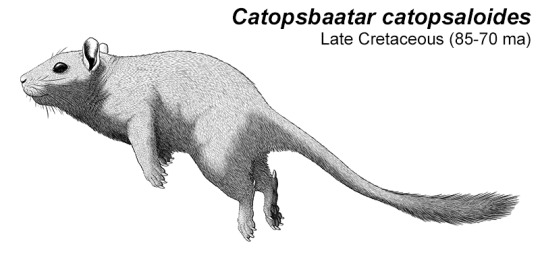



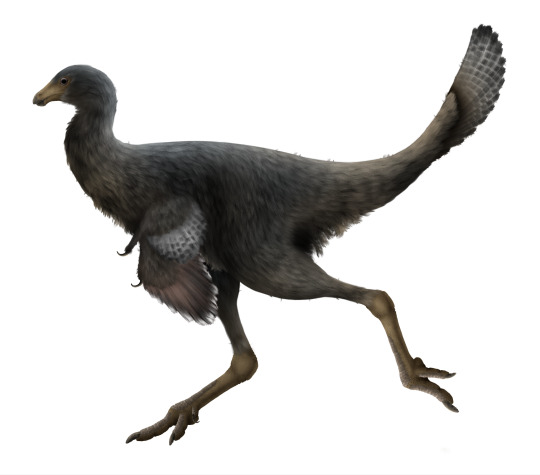

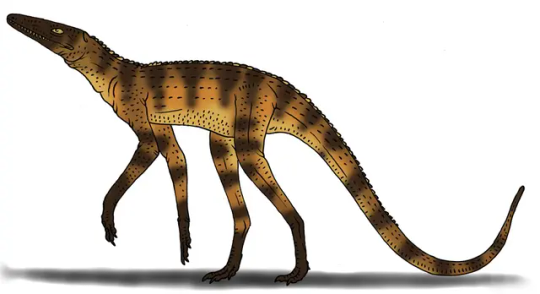

#paleoart#paleontology#scifi#creativity#fantasy#sci-fintasy#artwork#art#paleomedia#dinosaur#dinosaurs#prehistoric#inspiration#i just think they're neat#collection#projectkarya#project karya
4 notes
·
View notes
Text
If anyone has ideas for folklore entities (preferably corporeal ones) that I should give spec evo designs for, please feel free to give suggestions! Especially non-Western/non-mainstream folklore creatures, I really want to try to expand representations of the underrepresented.
Otherwise, I hope you like this idea I had for gnomes in my setting for Project KARYA :3
So I was browsing Reddit, as one does, and good ol' r/SpeculativeEvolution hit me with this post by u/_Soft_Kiwi_:
Which got me to thinking of gnomes in general; in particular, though, interpretations that depict them as assistant workers within the household (e.g. hobgoblins/tomte)...:

...as well as some interpretations of house elves/gnomes that depict them as having tails with tufts on them, e.g. nisse from Netflix's Hilda and I swear I've seen older interpretations as well with tails:

Which, in the spirit of Project KARYA, of course, got me thinking, "what IRL creature could potentially serve as the basis for such a species on Karya?"
Introducing, Tarsiers:
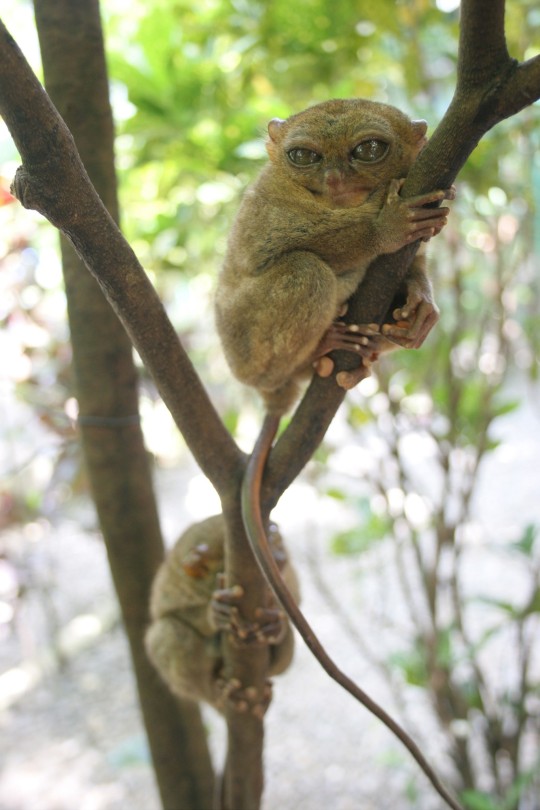
As their own branch of the primate family tree, tarsiers first appeared around 45 million years ago, and fossils of extinct species have been found in regions across Europe, Asia, and even North America. Considering this, it would be easy to make spec evo a lineage that would come to be less dependent on the trees, maybe become more bipedal and saltatorial (movement by hopping), and even have one or two species becoming comfortable with the presence of sophonts to the point of inhabiting their dwellings. They would come to serve as pest control as well as "tidying up" scraps and what would otherwise be considered garbage (either to eat for themselves or to add to nests for decoration purposes).
Will sketch a potential ancestor design and post when it's finished!
#creativity#fantasy#sci-fintasy#scifi#fiction#speculative biology#speculative fiction#speculative evolution#speculative zoology#worldbuilding#i just think they're neat#interesting#neat#cool cool cool#gnome#gnomes#gnome post#monkey#monkeys#primate#advice#help#thoughts
86 notes
·
View notes
Text
So I was browsing Reddit, as one does, and good ol' r/SpeculativeEvolution hit me with this post by u/_Soft_Kiwi_:
Which got me to thinking of gnomes in general; in particular, though, interpretations that depict them as assistant workers within the household (e.g. hobgoblins/tomte)...:

...as well as some interpretations of house elves/gnomes that depict them as having tails with tufts on them, e.g. nisse from Netflix's Hilda and I swear I've seen older interpretations as well with tails:

Which, in the spirit of Project KARYA, of course, got me thinking, "what IRL creature could potentially serve as the basis for such a species on Karya?"
Introducing, Tarsiers:

As their own branch of the primate family tree, tarsiers first appeared around 45 million years ago, and fossils of extinct species have been found in regions across Europe, Asia, and even North America. Considering this, it would be easy to make spec evo a lineage that would come to be less dependent on the trees, maybe become more bipedal and saltatorial (movement by hopping), and even have one or two species becoming comfortable with the presence of sophonts to the point of inhabiting their dwellings. They would come to serve as pest control as well as "tidying up" scraps and what would otherwise be considered garbage (either to eat for themselves or to add to nests for decoration purposes).
Will sketch a potential ancestor design and post when it's finished!
#projectkarya#scifi#creativity#fantasy#sci-fintasy#fiction#speculative biology#speculative fiction#speculative evolution#speculative zoology#worldbuilding#i just think they're neat#interesting#neat#cool cool cool#gnome#gnomes#gnome post#monkey#monkeys#primate
86 notes
·
View notes